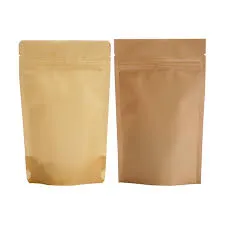- Afrikaans
- Albanian
- Amharic
- Arabic
- Armenian
- Azerbaijani
- Basque
- Belarusian
- Bengali
- Bosnian
- Bulgarian
- Catalan
- Cebuano
- chinese_simplified
- chinese_traditional
- Corsican
- Croatian
- Czech
- Danish
- Dutch
- English
- Esperanto
- Estonian
- Finnish
- French
- Frisian
- Galician
- Georgian
- German
- Greek
- Gujarati
- haitian_creole
- hausa
- hawaiian
- Hebrew
- Hindi
- Miao
- Hungarian
- Icelandic
- igbo
- Indonesian
- irish
- Italian
- Japanese
- Javanese
- Kannada
- kazakh
- Khmer
- Rwandese
- Korean
- Kurdish
- Kyrgyz
- Lao
- Latin
- Latvian
- Lithuanian
- Luxembourgish
- Macedonian
- Malgashi
- Malay
- Malayalam
- Maltese
- Maori
- Marathi
- Mongolian
- Myanmar
- Nepali
- Norwegian
- Norwegian
- Occitan
- Pashto
- Persian
- Polish
- Portuguese
- Punjabi
- Romanian
- Russian
- Samoan
- scottish-gaelic
- Serbian
- Sesotho
- Shona
- Sindhi
- Sinhala
- Slovak
- Slovenian
- Somali
- Spanish
- Sundanese
- Swahili
- Swedish
- Tagalog
- Tajik
- Tamil
- Tatar
- Telugu
- Thai
- Turkish
- Turkmen
- Ukrainian
- Urdu
- Uighur
- Uzbek
- Vietnamese
- Welsh
- Bantu
- Yiddish
- Yoruba
- Zulu
Innovative Solutions in Flexible Film Technology for Modern Packaging Needs
The Evolution and Impact of Flex Films in Modern Packaging
Flex Films, a significant player in the flexible packaging industry, have revolutionized the way products are packaged and presented. This innovative packaging solution offers a wide array of benefits, making it a preferred choice for manufacturers and consumers alike.
Flexible films are primarily made from polymer materials and are designed to be lightweight yet exceptionally strong. Their adaptability means they can be used for various applications, from food packaging to healthcare supplies, and even industrial products. The versatility of flex films stems from their capacity to be produced in multiple formats, including pouches, bags, roll stock, and custom shapes, catering to the diverse needs of different industries.
One of the most significant advantages of flex films is their impact on sustainability. In recent years, there has been a growing awareness of the environmental challenges posed by traditional packaging materials like glass or rigid plastics. Flex films offer a lower environmental footprint since they require less material to produce and generate less waste. Manufacturers are increasingly turning to biodegradable and recyclable options, further minimizing their impact. Innovative solutions, such as compostable films and films made from renewable resources, are emerging, paving the way for a more sustainable future.
Moreover, flexible packaging ensures product integrity and freshness. The materials used in flex films provide excellent barrier properties, protecting the contents from moisture, light, and oxygen. This barrier protection is especially crucial in the food industry, where maintaining freshness and extending shelf life are of utmost importance. The effectiveness of flex films in preserving food quality not only enhances consumer satisfaction but also reduces food waste, contributing to global sustainability efforts.
flex films

In addition to their protective qualities, flex films also allow for innovative branding and marketing opportunities. Brands can leverage high-quality printing techniques on flexible packaging to create eye-catching designs that attract consumers. The ability to print in vibrant colors and intricate patterns enhances product visibility on shelves, thereby influencing purchasing decisions. Furthermore, the lightweight nature of flex films reduces shipping costs and carbon emissions associated with transportation, aligning with modern consumers' preferences for eco-friendly products.
The versatility of flex films extends to their various applications in non-food sectors as well. In the pharmaceutical industry, flexible packaging is increasingly used to protect sensitive medications, extend shelf life, and ensure patient compliance. Additionally, cosmetic companies are utilizing flex films to provide aesthetically appealing and functional packaging for their products, showcasing their commitment to innovation and sustainability.
The advancements in technology have further propelled the growth of flex films. Innovations in extrusion, coating, and printing technologies have improved production efficiencies and expanded the capabilities of flexible packaging. These advancements allow for custom solutions that meet specific regulatory requirements and consumer demands. As a result, the flexible packaging industry continues to evolve, with new materials and technologies emerging to meet the changing landscape of product development and consumer preferences.
In conclusion, Flex Films are at the forefront of the packaging revolution. Their unique combination of sustainability, product protection, and marketing opportunities makes them an invaluable asset for various industries. As the world moves towards more eco-conscious practices, the role of flexible films will only become more significant. By embracing innovation and prioritizing sustainability, the flexible packaging industry is poised for a bright future, benefiting manufacturers, consumers, and the planet alike. As we look ahead, the continued evolution of flex films will undoubtedly shape the way we think about packaging in our daily lives.













